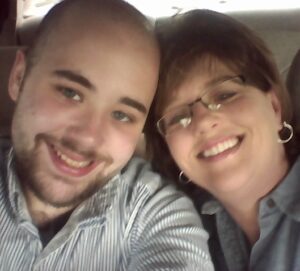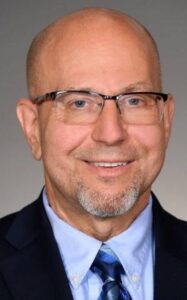A recurrence of substance use shouldn’t be viewed as a failure—it’s part of the process of healing
By Jason Langendorf
Laura Reed never imagined she would have a relapse story.
Reed wasn’t someone who used or even tried illicit drugs—never touched the stuff. Growing up in Mason County, Ky., she had witnessed addiction overtake some family members. She even remembers holding it against them. By the time she reached adulthood, Reed had plenty to fulfill her: a happy marriage, a beautiful son, a job she loved. She and Randy, her husband, owned their home and two cars. Professionally and financially, they were thriving.
“Life was good,” says Reed, 56.

All it took was a random moment—“a freak accident,” as Reed puts it—to change the trajectory of that life. In 1998, while Reed was playing with her son, Isaac, the toddler’s head collided with her cheek. Weeks later, she began suffering tooth pain. A dentist initially found nothing and prescribed her a month’s supply of pain pills. But Laura’s condition only worsened. Fast forward 18 months—past a pulled tooth, a stumped neurologist and even more pills to dull Laura’s constant pain—and she finally received a proper diagnosis of trigeminal neuralgia, a facial nerve disorder. Already physically dependent on painkillers by this time, Laura was prescribed OxyContin. The drug sent her slow spiral into a full-on nosedive.
“I was a barely functioning shell of a person because I was taking so much medicine,” Reed says. “I ended up losing my job. Losing my marriage. Losing my son. Going to jail, going to prison. I was drug-seeking at that point, buying off the street, because there was never enough. One was too many, and a thousand was never enough.”
Relapse Starts with Addiction
Reed’s journey will sound familiar to some of the nearly 21 million Americans who suffer from a substance use disorder (SUD). A person who previously had avoided illicit substances—never been tempted by them, in fact—saw her life upended inside of two years by an addiction that started with a physician’s prescription. But it’s important to remember that no matter the path to substance use—say, recreational use or to numb feelings of trauma—addiction isn’t a decision or a failure of mind over matter. No one chooses to be addicted.
The National Institute on Drug Abuse (NIDA) classifies addiction as a chronic disease, comparing it to heart disease and other conditions, while noting similar rates of recurrence (40% to 60% for substance use disorder; 50% to 70% for other maladies). Simply put, a person with addiction is about as likely to relapse as a person with asthma.
What happens is, you go into treatment and you don’t succeed, and then you feel [bad] about the moment. And then the cycle repeats, the spiral downward continues.”—Emma Roberts, National Harm Reduction Coalition
That word—relapse—has legitimate value as a sort of shorthand that theoretically can be quickly and easily understood. But over time, it has morphed into a loaded term in the addiction space. It’s become code for other things: disappointment, weakness, failure. For too long, substance use has been viewed in black and white (even, sometimes, by those in the treatment community): Either you’re sober, or you’ve done something wrong. For its part, NIDA tries to clear up the issue: “Relapse is common and normal and happens to a lot of people recovering from drug addictions,” the organization reports on its website. “People will often have one or more relapses along the way. It takes practice to learn how to live without drugs.”
Stigma in Relapse
Reed now recognizes the irony of her judgment of those family members who grappled with their own substance issues.
After her escalating opioid use led to her losing employment and financial stability, Reed turned to selling pain pills. In 2010 she was convicted on a felony charge and sentenced to seven years in prison. Released after nine months, she knew nothing about recovery or the resources available to her. Reed relapsed and was sent back to prison.
“I came in at a time when addiction was looked at like you’re just a weak person and a bad person,” she says. “And the only place for you is prison.”

While Reed was incarcerated, her husband, Randy, died of a heart attack at age 52. She watched her son’s childhood pass her by. Family relationships were fractured. In late 2012 she was released on parole and entered court-ordered in-patient rehab. Eighteen months of treatment and almost seven years without substances were a personal triumph, but Laura had lost so much. Co-occurring mental health issues took a toll. She says her attention-deficit disorder (ADD) and anxiety kept her from seeking treatment. Living alone and guilt-ridden, she began self-medicating. Another relapse.
As difficult as it may have been for Reed, her return to substance use was a typical part of the recovery process. Joseph Garbely, D.O., DFASAM, executive vice president and chief medical officer at Caron Treatment Centers, confirms this point, noting that it is settled science that people with addiction are denied their own agency. As borne out in the work of Nora Volkow, M.D., and Rita Goldstein, Ph.D., SUD essentially overrides the choice mechanism in the prefrontal cortex, Garbely says. In other words, the antiquated view of addiction—that it is a moral failing of the individual—is biologically inaccurate.
“We lecture the entire population, usually multiple times, on the neurobiology of addiction so people understand the process that’s going on in their brains when they’re in the commission of active addiction,” Garbely says. “They understand that there’s a possibility of relapse, but we’re trying to give them all the tools so that doesn’t have to happen.”
The bottom line, says Garbely: “We have to stop blaming the patient for relapse.”
Harm Reduction vs. Relapse
Today, addiction experts accept that not everyone wants to stop using substances altogether or considers abstinence attainable. Rather than turning those individuals away, treatment specialists are trained for harm reduction—to work with this population to help reduce their substance use and make other, healthier choices whenever possible.
Emma Roberts, senior director of the National Harm Reduction Coalition, stresses the importance of affirming any positive changes while reducing the internalized judgment and shame that can accompany a recurrence of drug use.
“There is a better place to succeed,” Roberts says, “versus people being shamed into treatment because that’s what you’re supposed to do and that’s what everybody’s telling you to do, when you might not be ready.”
Strict sobriety isn’t always the goal, Roberts says. But in any case, the response of caregivers to a return to substance use should be judgment-free.
“What happens is, you go into treatment and you don’t succeed, and then you feel [bad] about the moment,” Roberts says. “And then the cycle repeats, the spiral downward continues.”
For those striving to be substance-free, Garbely puts the onus on providers: “We have to figure out, what did we miss? What is in their way? What is taking them out, so to speak, and bringing them closer to, rather than further away from, their drug of choice? And ultimately, if they do relapse, why? What happened? Then we need to revise their treatment plan to include treatment of what may have been the nature of taking them out, into a relaxed position.”
I’m not saying I’m perfect in recovery, but I’m so much, much better than I was. It’s like, I’m not searching for drugs on the street anymore.”—Laura Reed
In Reed’s case, telehealth addressed many of her sticking points. She was able to receive treatment that met her specific needs, including medication (Suboxone) delivered to her home that curbed her cravings.
At least four months have passed since Reed last experienced a relapse. Life isn’t perfect, and neither is she. But that’s okay. Her son lives in her home. She has a sense of purpose. She has hope, not fear, for whatever the world brings her next.
“I’ve had relapse problems, and we’ve worked through that,” Reed says. “You know, I’m not saying I’m perfect in recovery, but I’m so much, much better than I was. It’s like, I’m not searching for drugs on the street anymore. I don’t wake up in the morning and think, ‘What am I going to do today?’”
Top photo: Hannah Reding














